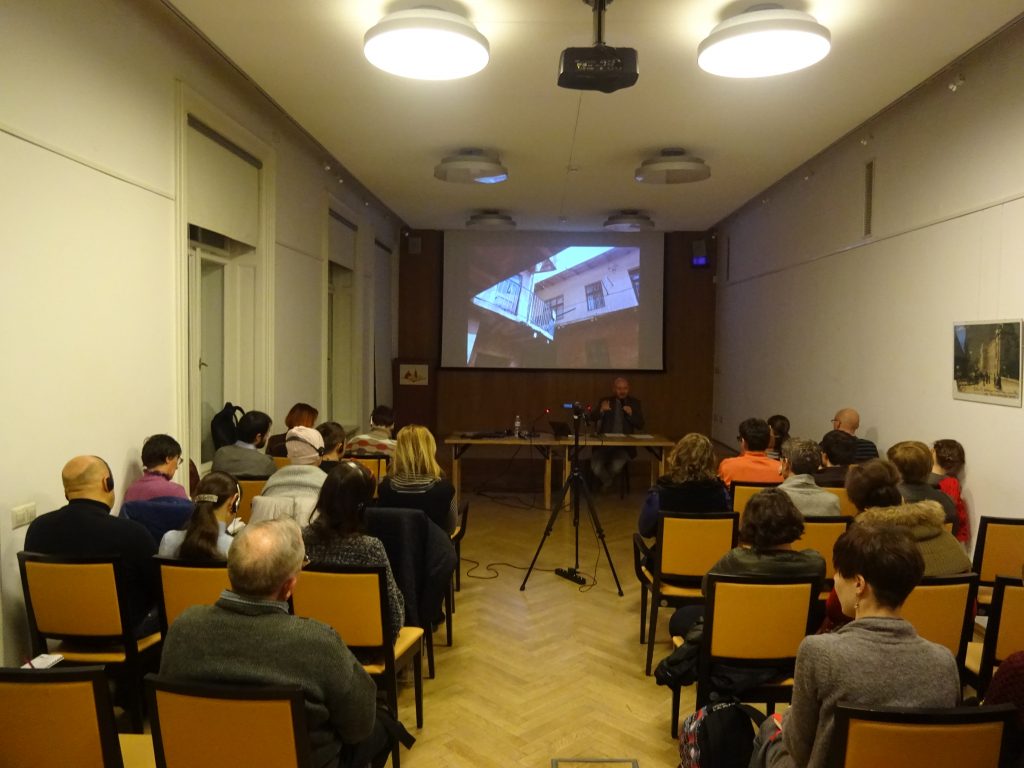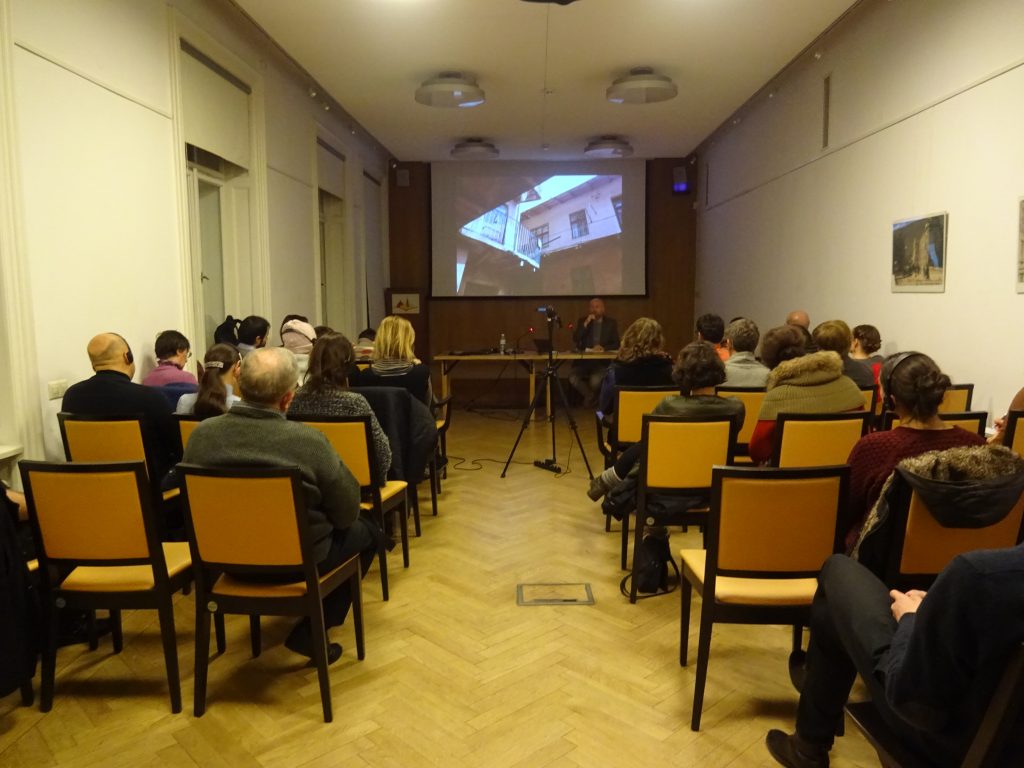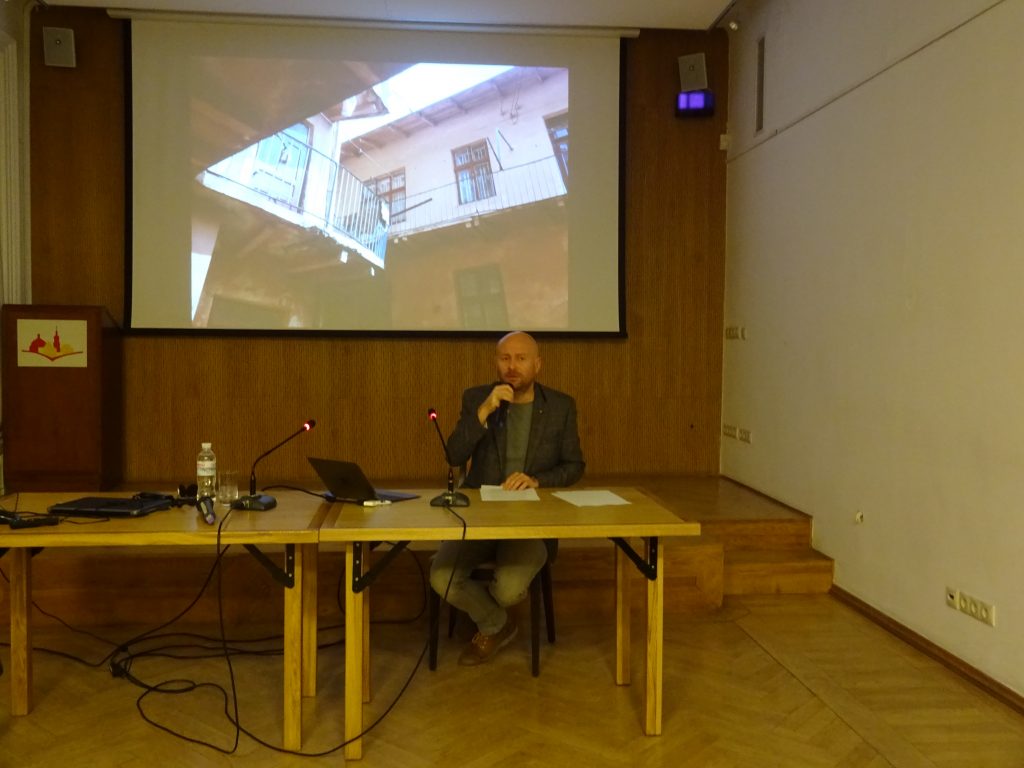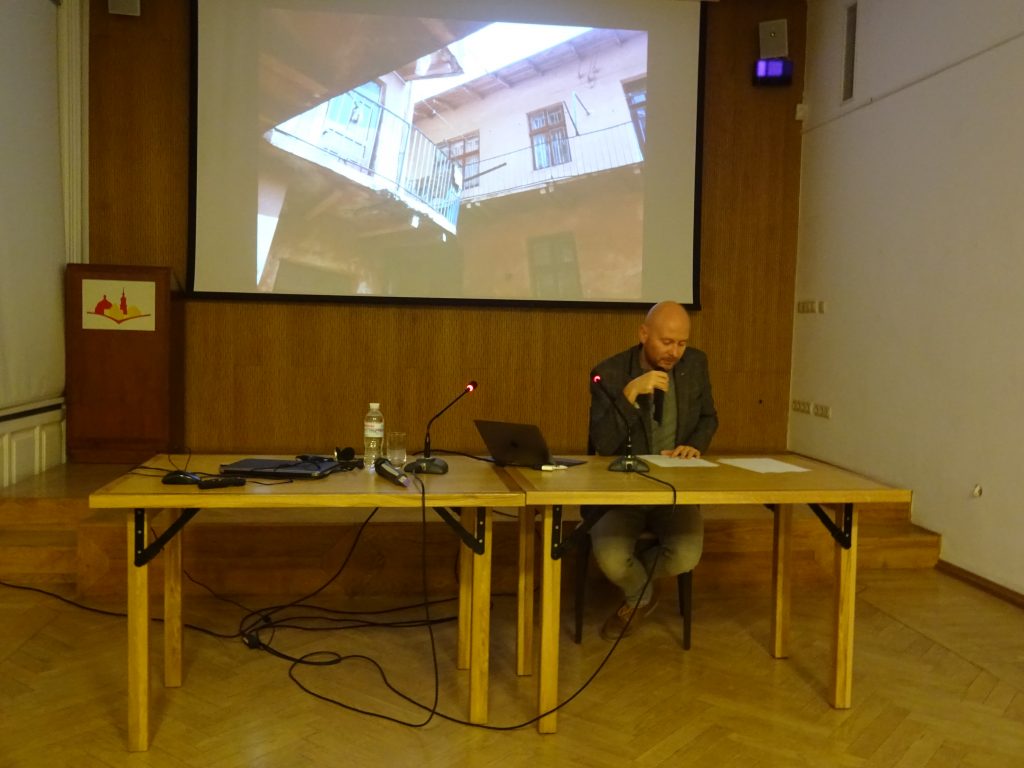Pidzamche or What Do We Watch Out For in the City...
Piotr Jakub Ferenski
Institute of Culture Studies at Wroclaw UniversityDecember, 1, 2016 / 6.00 pm
Center for Urban History, Lviv
Pidzamche neighbourhood nearby an administrative, commercial and tourist center of Lviv is the place with diverse architectural structure, both in terms of functionality, and aesthetics. In some fragments, the buildings resemble semirural samples to further rise above the main arteries of the city. Here, residential, sacral, administrative, and industrial facilities sit side by side. The core concentrically surrounded by the streets is the Pidzamche railway station. It is both the center of communications, as an eye-witness of most tragic events in this part of Europe, and also a memorial site.
Cityscape is not only about buildings and the related history, but also about modern everyday routines. The district has always been a working men place. Nevertheless, the space undergoes dynamic change due to different factors, such as attractive location. Some houses have changed their primary functions. New institutions, investments, and residents are coming here. Repairs of infrastructure in the city and the turnover of immovable property imply the revitalization process. On the one hand, it does enlivens the Pidzamche. On the other hand, though, the same as in other cities, it entails various risks, especially for old-term residents. There are numerous examples showing how mechanisms of free market, complicated political circumstances, and social problems (also financial) lead to conflicts of interests between the local and the global. They might be reflected in aesthetic, ethical, and legal discussions on urban space...

Piotr Jakub Ferenski
PhD, philosopher, culture studies scholar and art critic. Author and editor of works on historical and modern cultural phenomena/processes. Currently, he explores correlation between aesthetics, ethics and class nature in terms of political and economic discussions about urban space. He also deals with issues of understanding freedom from the perspective of cultural diversity.




